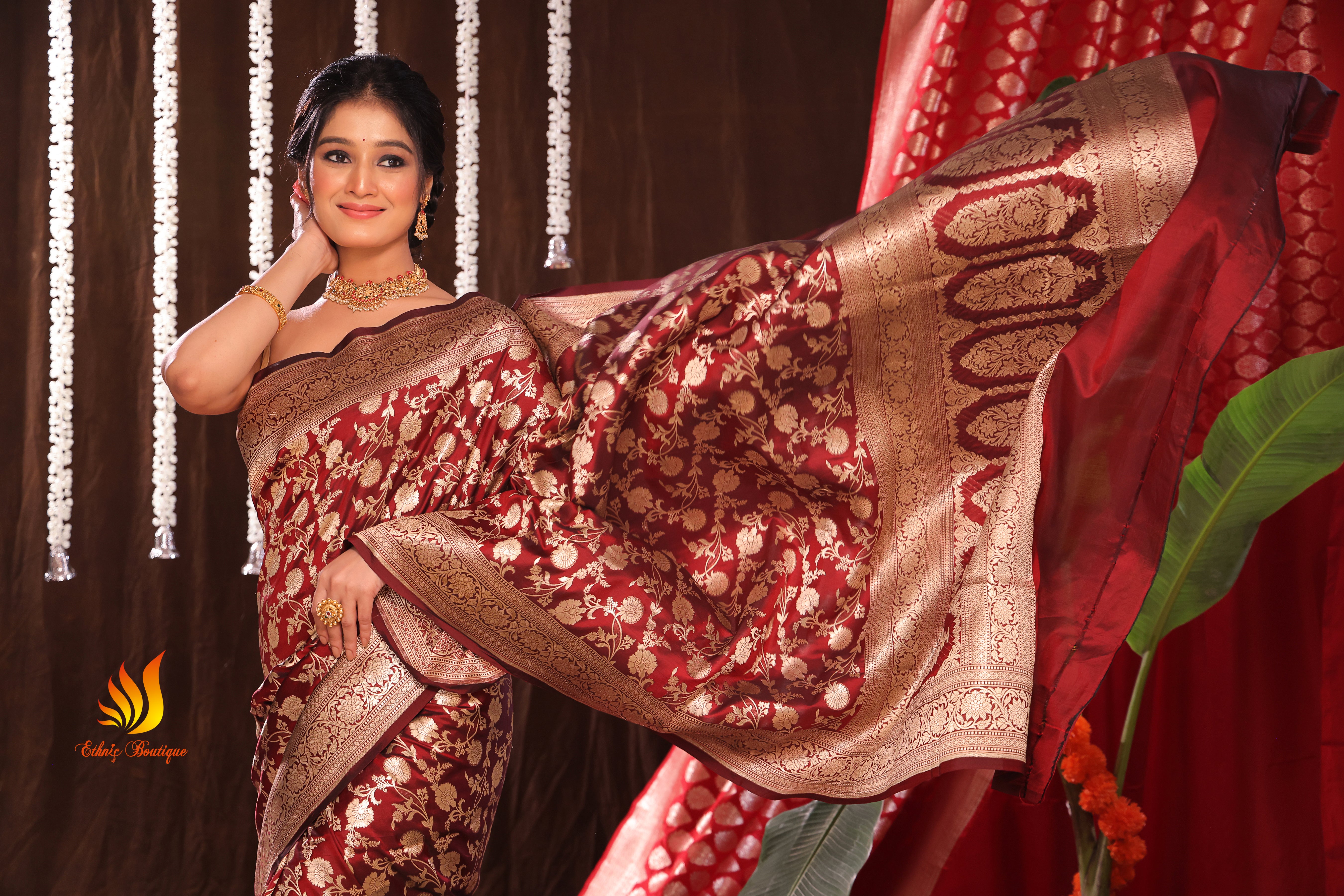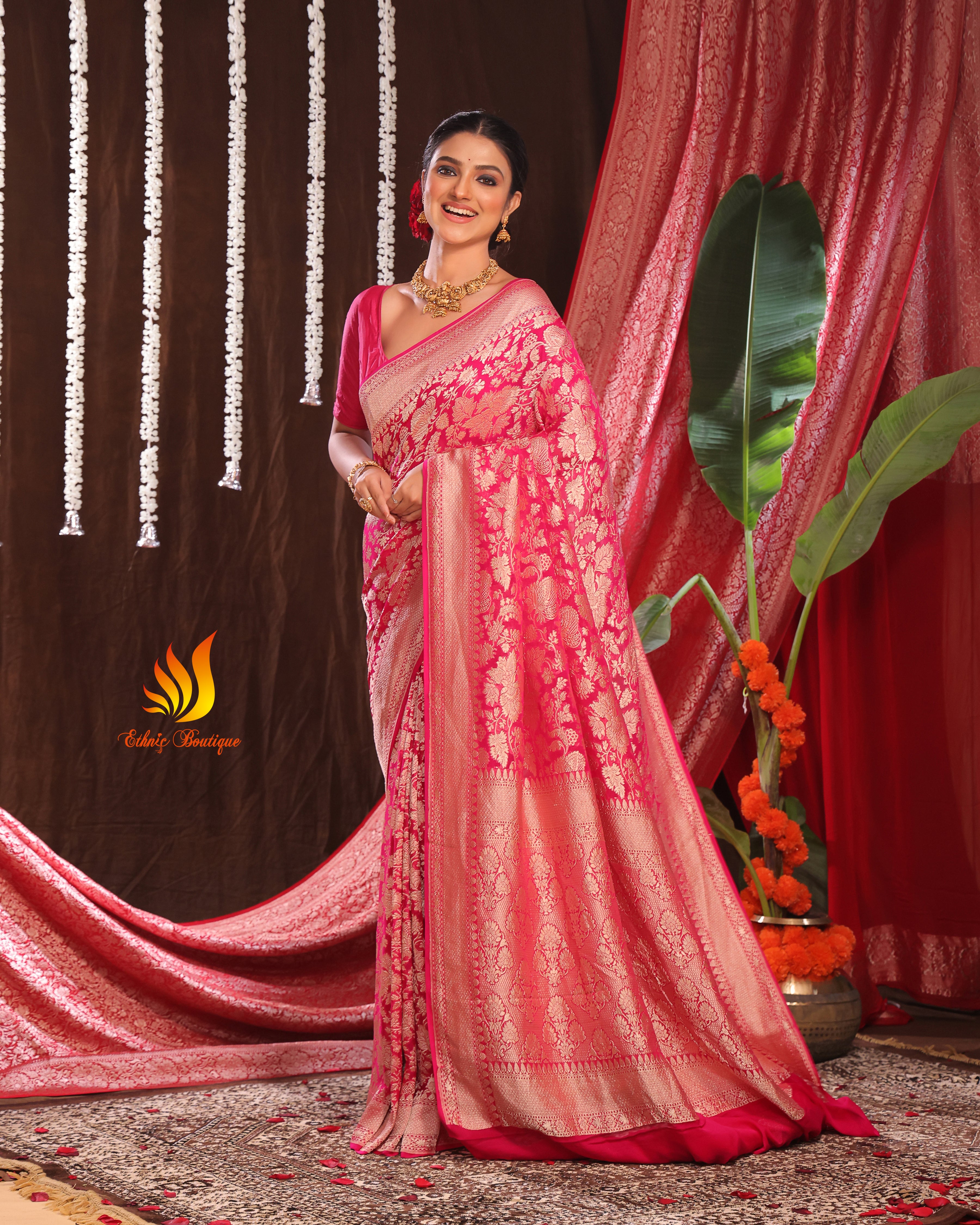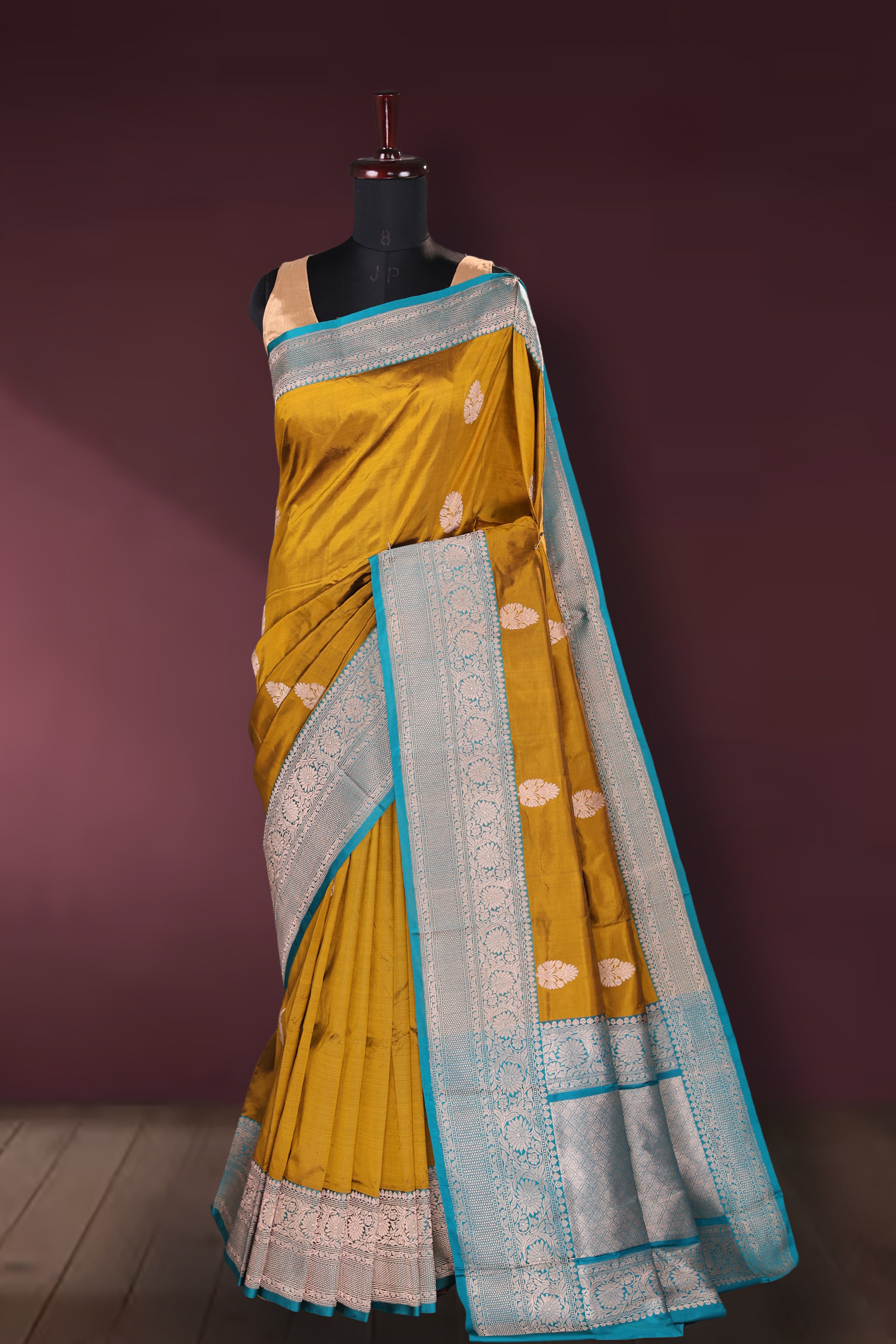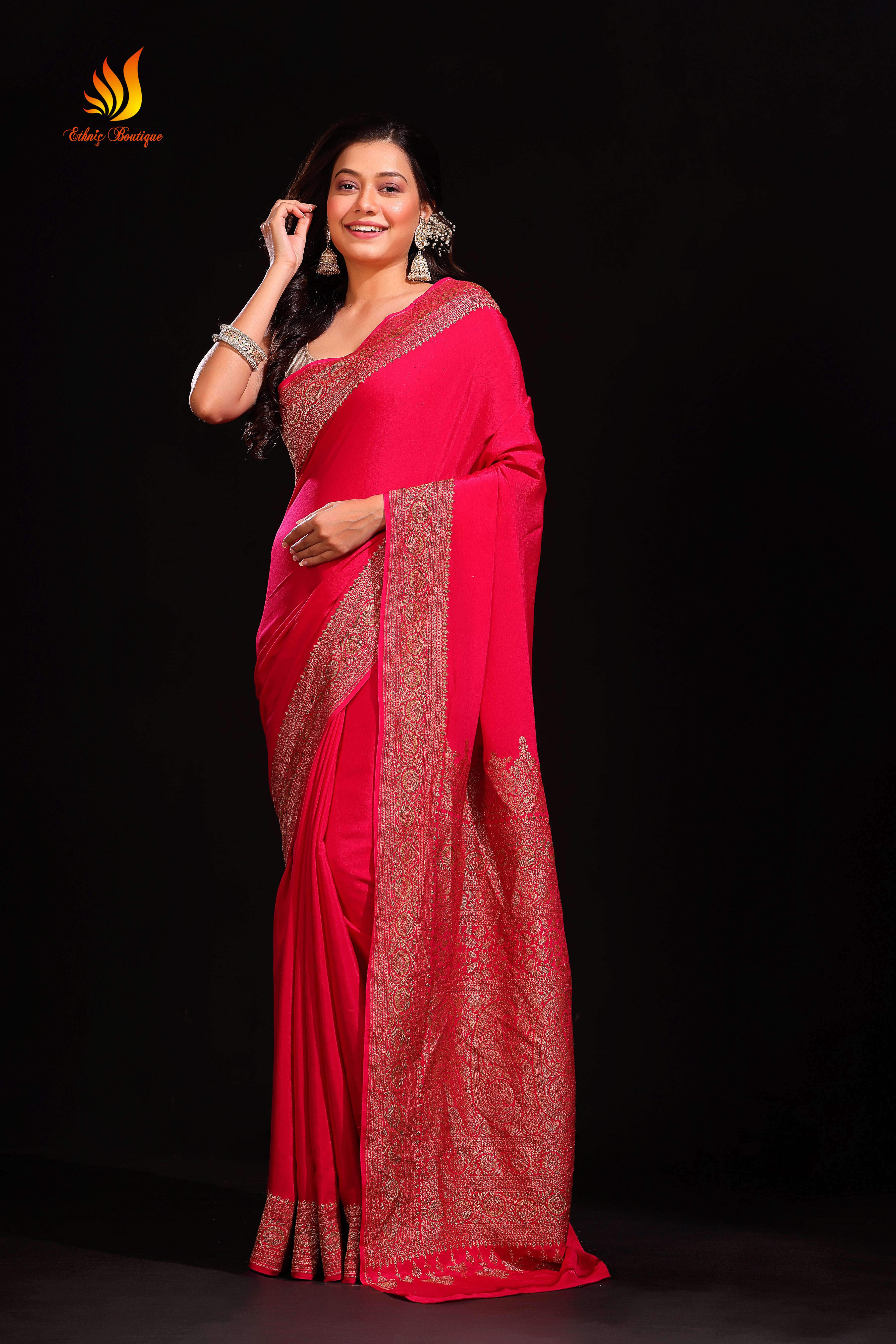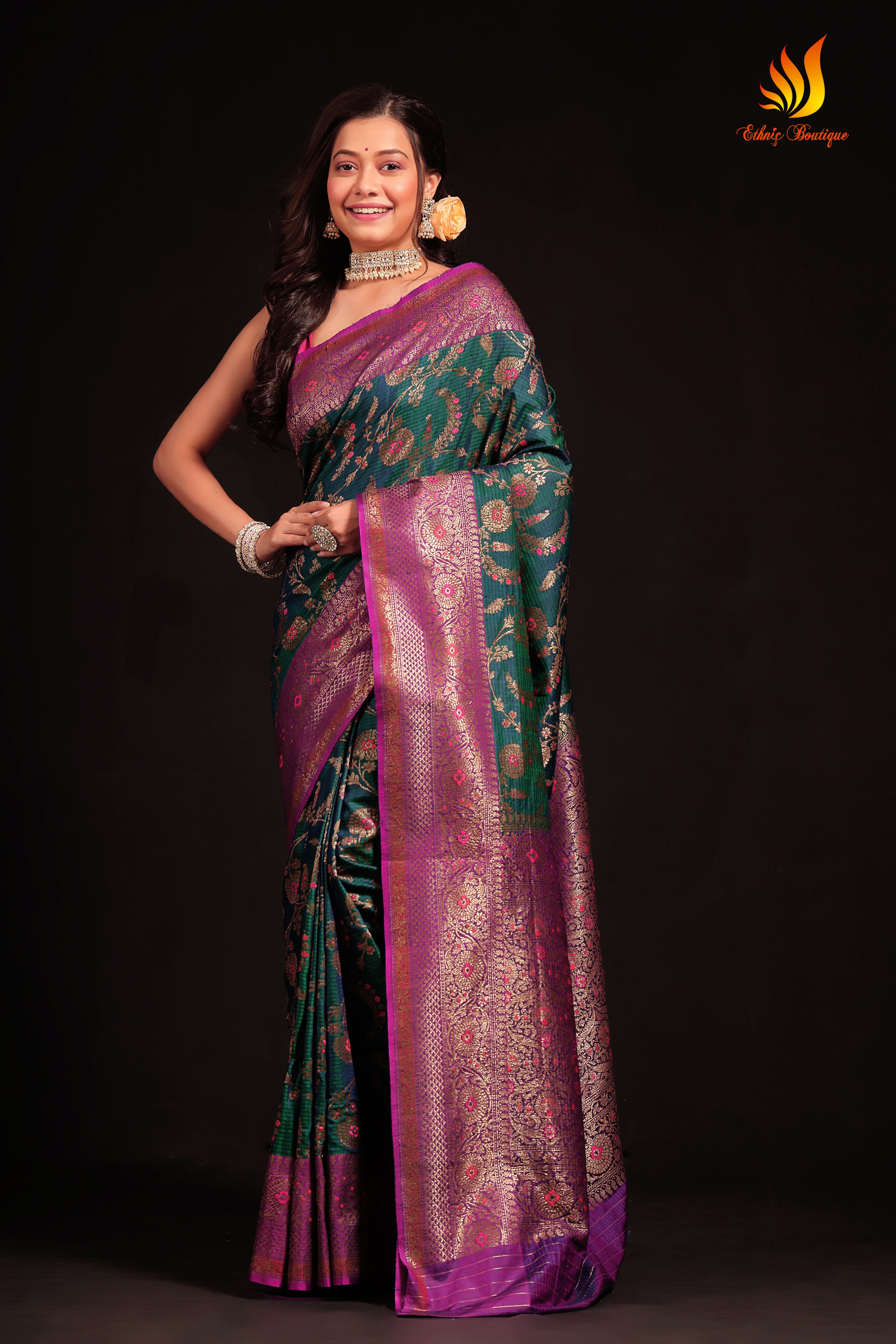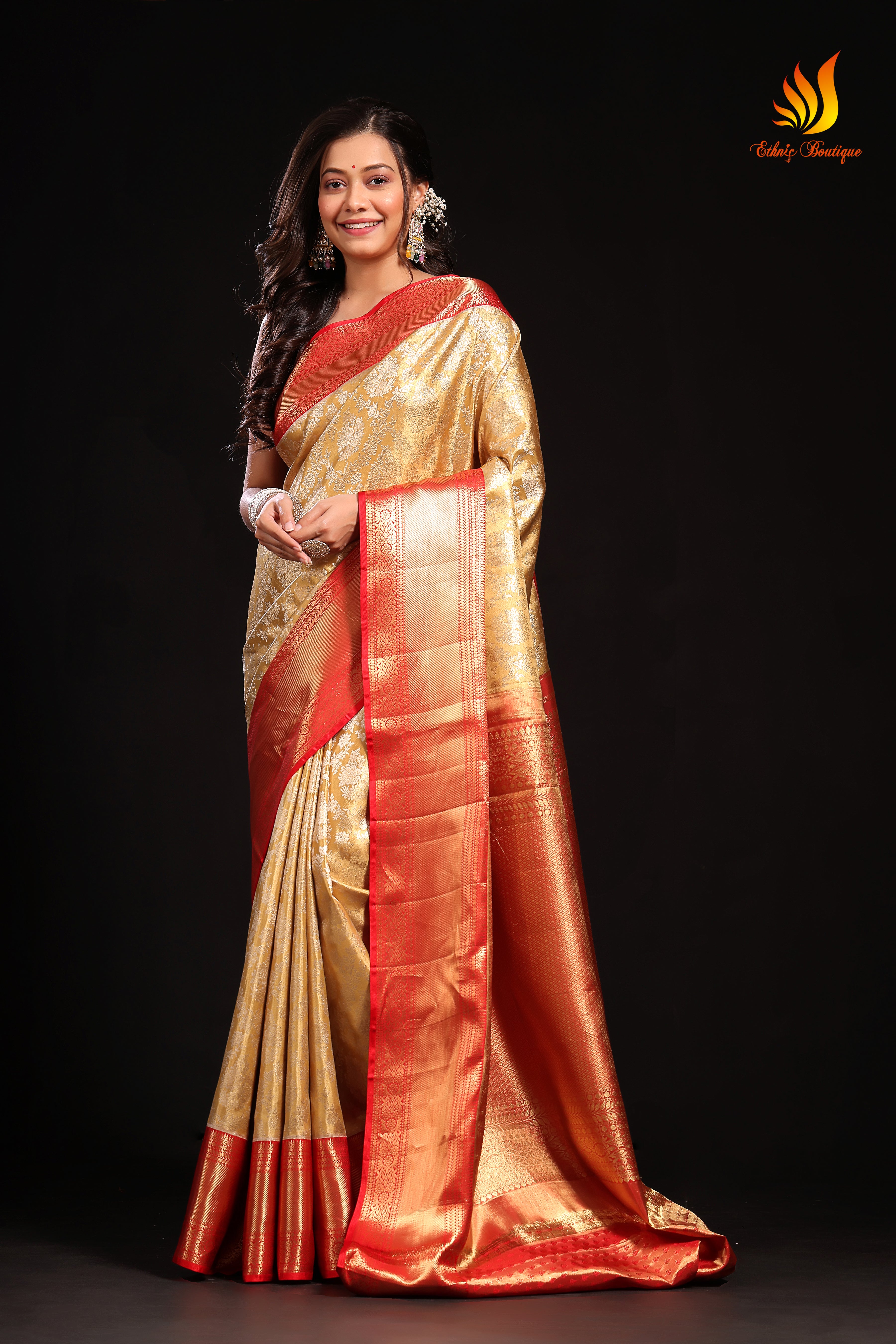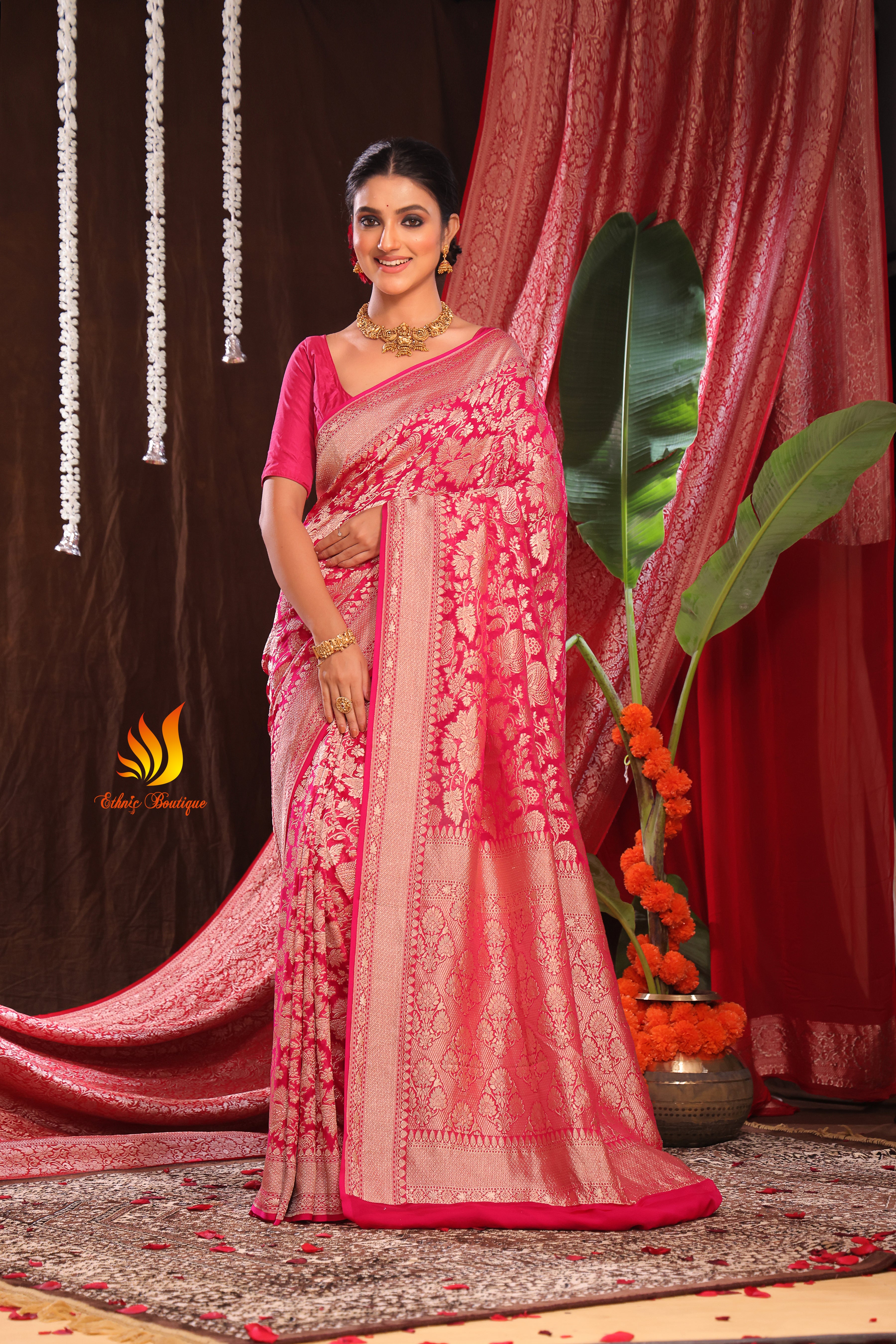Bidarbhī saree, often referred to as "Vidarbha saree," is a traditional Indian textile that originates from the Vidarbha region of Maharashtra, a part of central India. Known for its intricate designs and distinct cultural heritage, these sarees have a rich history that dates back centuries.
Here are the main features and characteristics of Bidarbhī sarees:
1. Geographical Origin:
-
The Bidarbhī saree is primarily woven in the Vidarbha region, which includes cities like Nagpur, Amravati, Wardha, and Yavatmal.
-
The weaving techniques of this region are influenced by the rich cultural and historical diversity of Maharashtra.
2. Fabric and Material:
-
Cotton: Traditionally, these sarees are made from cotton, which makes them perfect for everyday wear due to their comfort and breathability.
-
Silk: Some variants are woven with silk threads, offering a luxurious sheen and a more formal look.
3. Design and Patterns:
-
Floral and Geometric Motifs: Bidarbhī sarees often feature intricate floral designs, paisleys, and geometric patterns. These are usually woven in contrasting colors that stand out against the background of the saree.
-
Bandhani and Leheriya: Some versions of the saree may have Bandhani (tie-dye) or Leheriya (wave pattern) designs, which are common in many other regions of India as well.
-
Traditional Borders: The borders of these sarees are typically wide and feature elaborate patterns, sometimes incorporating zari (golden or silver thread) work to add a festive touch.
-
Pallu: The pallu (the draped portion of the saree) often carries the most intricate design, with woven motifs that add to the saree's overall beauty.
4. Colors:
-
Bidarbhī sarees come in a variety of colors, often with rich tones like deep reds, maroons, greens, and blues. The colors can range from earthy and muted to vibrant and bright, depending on the occasion.
5. Weaving Technique:
-
The weaving of Bidarbhī sarees involves a handloom process, often carried out by skilled artisans who use traditional techniques passed down through generations.
-
The craft may also include some jacquard weaving, where patterns are incorporated directly into the fabric rather than being printed or embroidered on the surface.
6. Occasions:
-
Daily Wear: Many Bidarbhī sarees are designed for daily wear due to their comfort, lightness, and ease of handling.
-
Festive Occasions: The richer, more elaborately woven versions of these sarees, especially those with zari or silk threads, are worn for festivals, weddings, and other special occasions.
7. Cultural Significance:
-
These sarees are not just a piece of clothing but are woven with cultural significance, representing the region's rich heritage in textiles.
-
The intricate artistry involved in creating these sarees is a testament to the skill and craftsmanship of the artisans from the Vidarbha region.
8. Modern Variations:
-
In recent years, Bidarbhī sarees have gained popularity outside Maharashtra, with a new generation embracing the traditional fabric for both casual and formal wear.
-
Some modern versions may blend traditional elements with contemporary designs, making them more accessible to younger audiences.
In Conclusion:
The Bidarbhī saree is a beautiful representation of Vidarbha’s textile artistry and is an elegant choice for women who appreciate traditional handloom fabrics. Whether for everyday use or a festive occasion, the saree embodies the cultural richness of the region and continues to remain a cherished part of Indian fashion.
